Temple Layout The East facing RajaGopuram of this temple is 3 tiered and aligned straight to it are the armoured Dwajasthambam, Nandi and Balipeetam. As we come into the ourter prakaram through the gateway, to the right is the sannidhi of the female deity Oppilla Nayaki. Many other sannidhis for various deities are spread across the outer prakaram - The four primary nayanmars, Ganesha, Subramanya, King Veerasena and also the 'Sthala Vruksha' kondrai (Laburnum Tree), Bhairava and Surya, the Sun god. As we walk along the outer prakaram in a clock-wise direction, an entrance from the southern side of the outer prakaram leads to the Nataraja Sabha. On a pedestal in front of Nataraja are two small-sized idols. One is of Mahavishnu blowing his conch and another is of Brahma playing a five-faced instrument. It is very rare to see this depiction of Shiva performing His cosmic dance to the tunes of Brahma and Vishnu. This darshan of the Tri-murthys is special and those who learn music and dance come here to perform special pujas. It is beleived that musicians and dancers achieve excellence in their art forms by praying here. The presiding deity Sivakozhundeesar is a 'swayambhoo LInga'. Sun rays fall on the deity on the 20.21 and 22 of the tamil month 'panguni'. Narthana Vinayaka, Dakshinamurthy, Chandeshwarar, lingothbhavar, Brahma and Goddess Durga adorn the walls around the sanctum as 'Goshta Murtha's. Both Brahma and Vishnu, worshipping in a standing posture, are on either side of Lingothbhavar.
Temple Legend - Periyan and his wife, a peasant couple who resided in this area, were deeply devoted to Lord Shiva. Their daily routine included the practice of only eating after they had fed a devotee of Shiva. However, Lord Shiva decided to test their unwavering commitment. He orchestrated a situation where no devotee would visit the couple's home, yet they remained steadfast in their determination to offer food to someone before partaking themselves. In their quest to fulfill their customary practice, the couple sought out laborers who typically worked on their farm. To their surprise, there were no laborers to be found working in the fields on that particular day. Undeterred, they patiently waited for someone to arrive so that they could offer them a meal before eating themselves. It was at this moment that Shiva appeared before them in the guise of a devotee, and he made it clear that he would only accept their hospitality if they allowed him to work in their field, after which he would partake of their food as a reward for his labor. The peasant couple agreed to Shiva's terms and asked him to plough their field. When they returned later with a home-cooked meal for their guest, they were astonished to find that their field was now filled with a fully grown crop ready for harvest. Under the shade of a 'kondrai' maram in their field, the couple fed their guest and inquired about the miraculous growth and ripening of the millet crops in just one day. In response, the guest vanished, and in his place stood Lord Shiva. Overwhelmed with gratitude, the couple prayed to Lord Shiva. This place came to be known as 'Tiruthinai Nagar'.
The pathikam composed by Sundarar is mentioned in the seventh tirumurai. It is noteworthy that the name of the place and the name of the deity is mentioned in every verse of the pathikam.
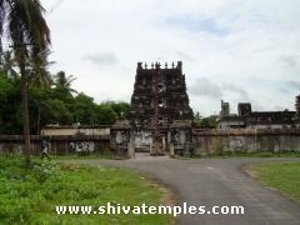 View of the temple tower
View of the temple tower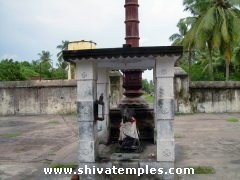 Flagpost, Nandi mandapam
Flagpost, Nandi mandapam Four Nayanmars
Four Nayanmars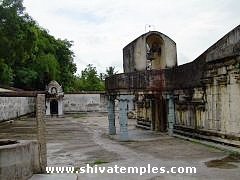 Prakaram
Prakaram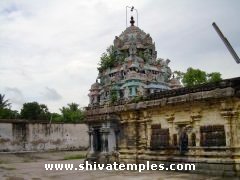 Swamy Vimanam
Swamy Vimanam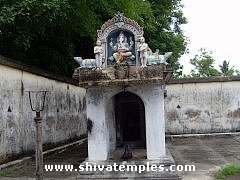 Vinayaka sannidhi
Vinayaka sannidhi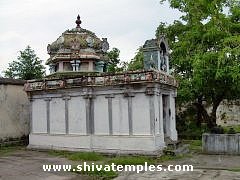 Murugar sannidhi
Murugar sannidhi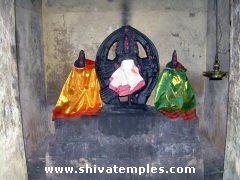 Murugar with His two consorts
Murugar with His two consorts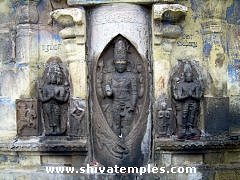 Brahma, Vishnu on either side of Lingothbhavar
Brahma, Vishnu on either side of Lingothbhavar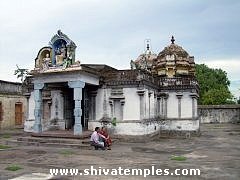 Temple of Oppila Nayaki
Temple of Oppila Nayaki